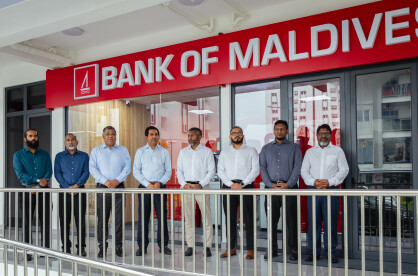HDFC’s 4th Sukuk issuance
Looking ahead, one of the key policy changes that the government needs to consider is to offer HDFC shares to the public.

MFR Images
Looking ahead, one of the key policy changes that the government needs to consider is to offer HDFC shares to the public.

MFR Images
On 22 September, the Housing Development Finance Corporation Plc (HDFC) announced the extension of the closing date of its Mudarabah Sukuk Issue No. 4 from 30 September to 31 October 2021. This Sukuk or Islamic Bond of MVR200 million (a total of 200,000 Sukuks) offered for sale is similar to the one issued in August 2019, with a face value of MVR1,000 and a profit-sharing ratio of 65:35, offering 65 percent of the profits generated to the Sukuk holder, paid semiannually with a maturity of 10 years.
Assuming that HDFC's past financing rates of 11-12 percent per annum still holds, the 65 percent of profits will translate to about 8 percent.
Hence, for each Sukuk of MVR1,000, MVR80 will be paid semiannually, i.e. MVR40 every 6 months, although it may vary since it is a Mudaraba.
If the Sukuk is held for the 10 years till maturity, it will yield a profit of MVR800.
For example, if you have a saving of MVR100,000, say a savings account set up for a child, an investment in this Sukuk will yield a profit of MVR80,000.
This is a good return on investment, compared to other similar opportunities available on the market. The Maldives Islamic Bank (MIB) has the most attractive rate at around 4-6 percent, if one wants to invest for over 3 years, while the Commercial Bank's weighted average deposit rates for Maldivian Rufiya are at 4.5 percent for 2 to 3-year time deposits, while for US Dollars it is around 1.75 percent.
However, one of the key challenges investors face in the Maldives is the lack of market liquidity. Although the Sukuk is listed, secondary market activity for securities is almost non-existent in the Maldives.

According to the HDFC, the corporation was able to attract a total MVR127 million of the MVR200 million it had offered in the last issue - about 127,000 Sukuks were sold to 138 investors. Although, the number of investors has declined from 467 to 138 between the first and the third issuance, the total value raised has increased from MVR23 million, MVR89 million and MVR127 million during the first, second and the third issuance respectively.
As such, the total listed Sukuks amounted close to MVR240 million as at end of 2020 while listed corporate bonds amounted about MVR190 million, with total debt securities issued at MVR433 million.
The funds are utilized to fund shari'ah compliant mortgage housing finance operations under the HDFC Amna. The structure of these Sukuks are based on the Shari'ah principle of Mudaraba (money management), under which one party will be providing the capital (the Rabb al Maal) and the other party will be managing the capital (the Mudarib). In this case, the HDFC is carrying out the Mudarib function.
Over the years, there has been an increase in demand for Islamic modes of financing and such HDFC's profits from such modes has increased from MVR34 million to MVR38 million in 2020. Islamic finance now accounts for about 30 percent (MVR560 million) of HDFC's MVR1.8 billion portfolio (1.3 billion conventional and 0.5 billion Islamic), while other borrowed funds, largely from commercial banks, accounts for over 60 percent of its portfolio. The company is working to reduce borrowings from commercial banks through the issuance of debt securities such as Sukuks.

The company, established in 2004, has grown rapidly, with total assets increasing from MVR1.4 billion in 2016 to MVR2 billion in 2020. Over the last five years, the company has enjoyed an average return on equity (ROE) of 17 percent, maintaining its profit on average at MVR88 million while earnings have increased by 50 percent over the period. With an average earnings per share (EPS) of over 55 and dividend per share of over 21, HDFC has become one of the most profitable companies in the Maldives over the last five years.
Looking ahead, one of the key policy changes that the government needs to consider is to offer HDFC shares to the public, so that the benefits of this profitability can be shared among Maldivians. The company was privatized in 2008, with a majority of shares now held by strategic foreign partners or shareholders, with the International Finance Corporation (IFC) holding 18 percent, the private sector arm of Asian Development Bank (ADB) 18 percent and HDFC Investment Ltd (India) 15 percent. The Government of Maldives holds 49 percent.
Most of these foreign parties are private sector arms of international financial institutions and are very important strategic partners especially during the initial growth of the company. Normally such strategic partners remain until the company is established and they divest but in HDFC’s case it has been now more than 12 years and an exit strategy is important for the future growth.
Since the company had an average 40 percent dividend payout ratio, over the last five years alone, about MVR90 million [approximately USD5.8 million) would have been repatriated abroad. This represents a significant outflow which could have been reinvested as loan capital in the Maldives. With the housing market expected to expand throughout the Maldives, it is time that the company becomes a real public limited company, with shares sold to the Maldivian public so as to retain a larger chunk of its profits in the Maldives.



